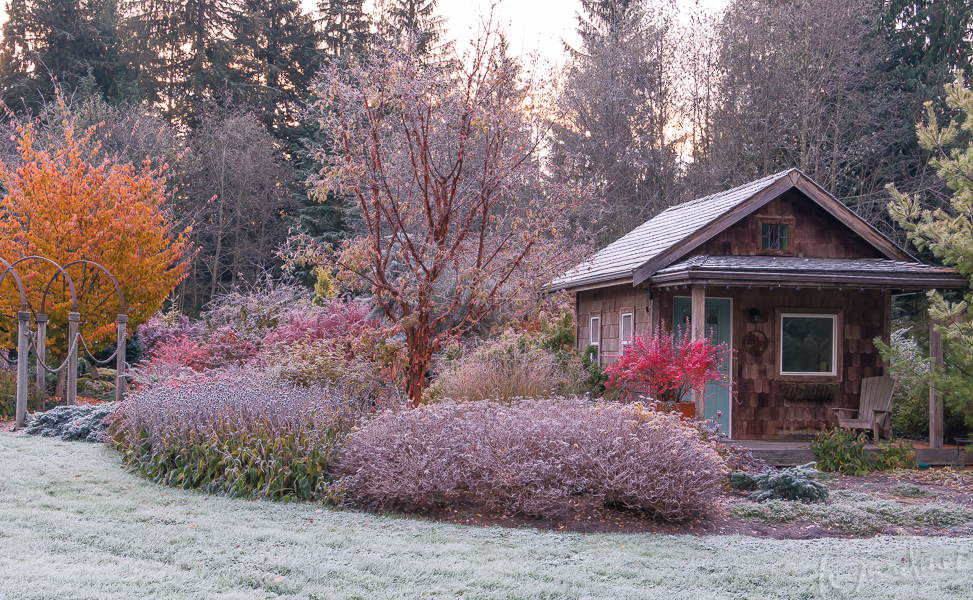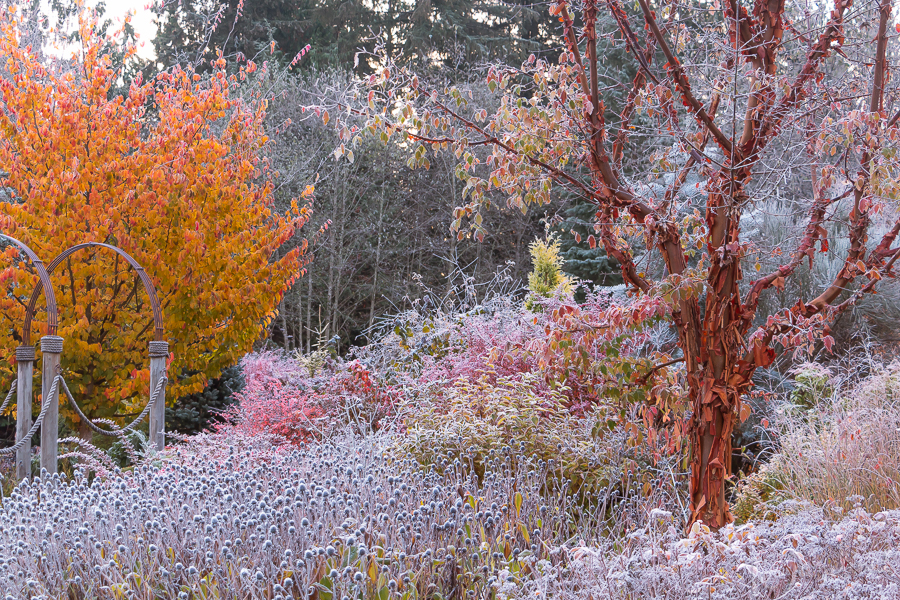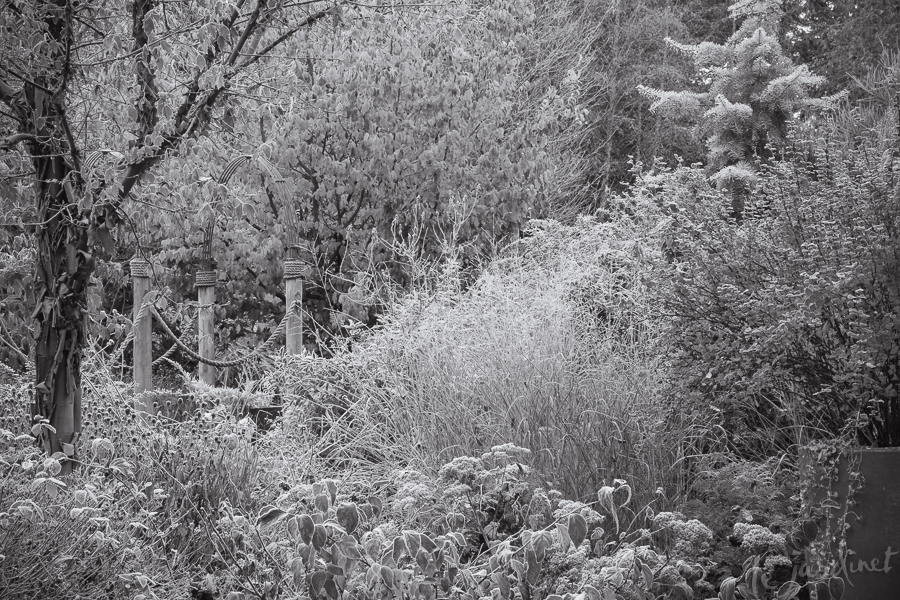Layers in the Winter Garden

Layering is a way of life here in the Pacific Northwest where on any given day, regardless of the season, you may be reaching for a fleece jacket one minute and peeling down to a T-shirt the next.
As I looked outside early this morning the sun was just beginning to rise over the tree tops, a hint of a pink glow reflecting on the frosty branches outside my bedroom window. One moment I was snuggled under the duvet, the next I was throwing a thermal top over my PJ's and reaching for my camera to capture the beauty. It was irresistible!
With no set agenda for the impromptu photo shoot I stood for a moment outside the kitchen door assessing the light. I knew I had only a few minutes before the warmth of the sunrise faded. I needed to understand what I was being drawn to in order to try and tell that story through the lens. I quickly realized it was layers.
 Why are layers important?
Why are layers important?
We wear layers of clothing to be prepared for changing weather conditions. In the garden I find that layers of plant material play a similar role – they keep the scene interesting even as colors fade and leaves begin fall. What I discovered this morning was that layers of texture are really key to these cold weather scenes. In the "big picture" above the peeling bark of the paperbark maple stands out against the finer textures. While the Ruby Vase Persian ironwood is still glowing, and some other shrubs still display their fiery colors, it was the naked, twiggy structures and seed heads that drew me in.
 Stepping closer I began to see the subtle tapestry of spiky seed heads and wispy grasses all etched with frost, while the mahogany bark and orange leaves bookended the scene.
Stepping closer I began to see the subtle tapestry of spiky seed heads and wispy grasses all etched with frost, while the mahogany bark and orange leaves bookended the scene.
 Closer still and the leaves reminded me of a stained glass window, each color carefully placed and framed.
Closer still and the leaves reminded me of a stained glass window, each color carefully placed and framed.
 Refocusing on just a single layer – the seed heads of black eyed Susan, while I loved the repetition and monochromatic simplicity they were missing something. It was rather like taking a photograph of a solitary wave. Yes there was a certain beauty about it, but that beauty was enhanced by the many other rolling waves in the garden scene.
Refocusing on just a single layer – the seed heads of black eyed Susan, while I loved the repetition and monochromatic simplicity they were missing something. It was rather like taking a photograph of a solitary wave. Yes there was a certain beauty about it, but that beauty was enhanced by the many other rolling waves in the garden scene.
 I then walked around to the other side of this large border, intending to take some close ups of individual leaves, but again I quickly realized the beauty was in the layers and the play of light on the individual colors and textures.
I then walked around to the other side of this large border, intending to take some close ups of individual leaves, but again I quickly realized the beauty was in the layers and the play of light on the individual colors and textures.
Your challenge
Grab your camera – a cell phone will be fine – and take some images to assess the layers in your winter garden, specifically the textures in those layers. If you find it difficult to see past the color, use a filter to make the photo black and white. Here's my header image developed in that way.
 You can clearly see the distinction between the bark, fine grasses, etched leaves and conifer. These textural layers are what draws the eye through the vignette at least as much as color does.
You can clearly see the distinction between the bark, fine grasses, etched leaves and conifer. These textural layers are what draws the eye through the vignette at least as much as color does.
As you analyze the result, consider whether adding some fine grasses would help break up the plethora of mid-sized leaves. Or does the scene need a focal point such as a sculptural conifer, interesting bark texture or a container?
Have fun – and share your photos on my Facebook page. I'd love to see what your garden wears in winter!
And if you're looking for more winter garden inspiration, my book Gardening with Foliage First has an entire section dedicated to fall and winter combinations.
Subscribe to Receive Blog Posts
Gardening inspiration delivered right to your inbox from Le Jardinet